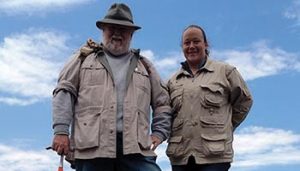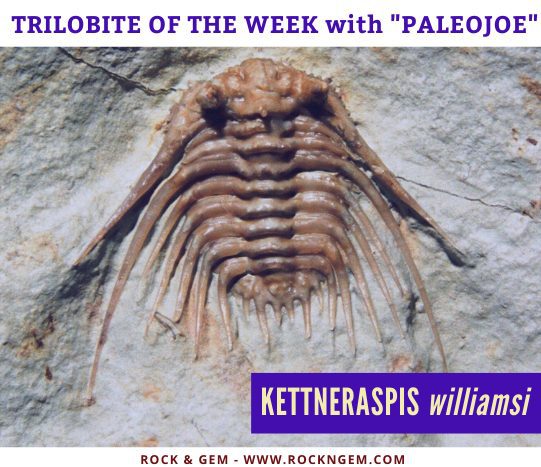By Joseph “PaleoJoe” Kchodl
The KETTNERASPIS williamsi is a small but highly ornamented trilobite. Very broad and wide this trilobite has long spines, and was initially named LEONASPIS williamsi.
The eyes are set high on the cephalon, and the cephalon ends in two very long backwardly pointing genal spines. Inflation of the glabella is also evident. Thoracic segments also end in long spines, with the third thoracic segment ending in two longer spines. The spines nearly reach the end of the trilobite. It has a very small pygidium also ornamented with spines.
Cleaning and preparing this trilobite is very difficult and requires specialized tools and professional preparers. Typically measuring 1 to 1 1/2 inches long, including the spines, the KETTNERASPIS williamsi is often found in the Haragan Formation of Coal County, Oklahoma.
Cheers to another fascinating trilobite form!

About the columnist: Joseph “PaleoJoe” Kchodl is a paleontologist, educator, veteran, author, fossil dig organizer/guide, business owner, husband, father, and grandfather, and fossil fanatic. For decades, he’s spent hours in classrooms around the Midwestern United States and beyond, speaking to school children about fossils and fossil hunting. Visit his site to purchase fossils, contact PaleoJoe, visit www.paleojoe.com.
Plus, learn more about PaleoJoe and his daughter PaleoJen and their paleontology exploration partnership in an the article “Fueling a Passion for Paleontology“.

